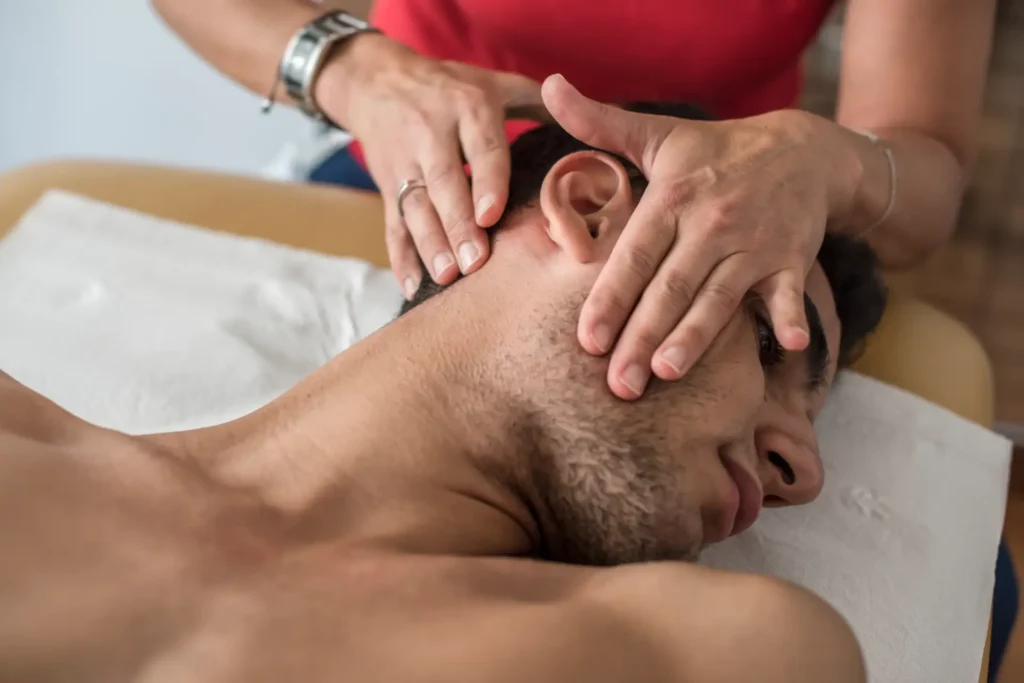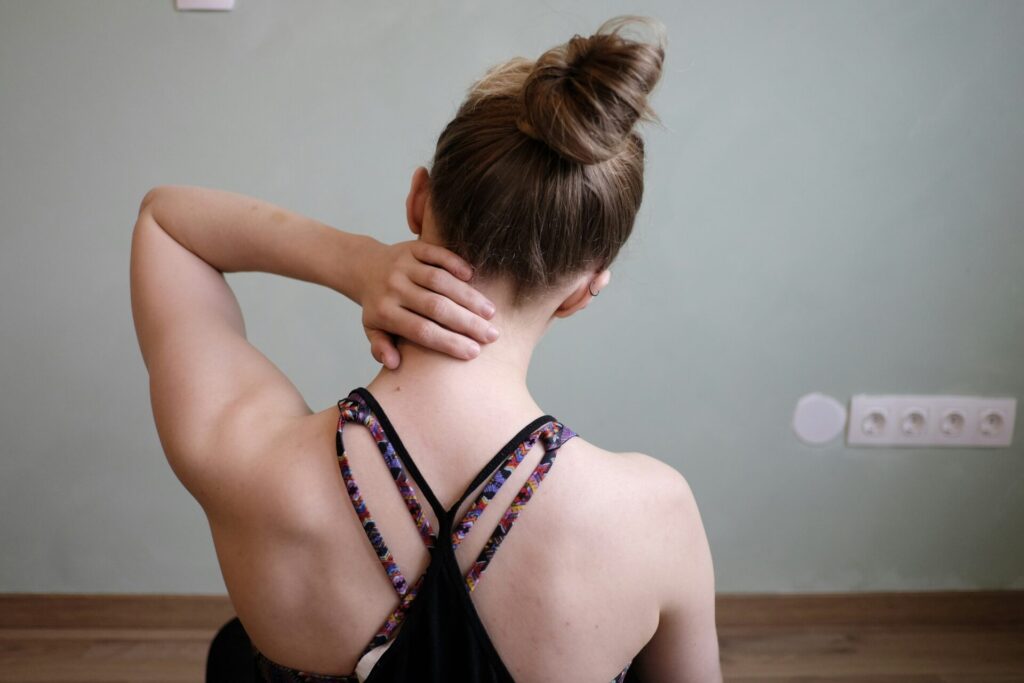Are you experiencing shoulder, back, or wrist pain from CrossFit training?
Whether you’re new to CrossFit or a seasoned athlete, injuries are a common concern due to the high-intensity lifting and dynamic movements involved. At Prestige Health and Wellness, we specialize in injury assessments designed to help you identify potential weaknesses, prevent injuries, and enhance your performance. Our team of experts uses a comprehensive approach to ensure you can train safely and effectively, minimizing the risk of injury while improving your overall lifting technique.
Common Weightlifting Injuries in CrossFit
CrossFit involves high-intensity lifting and dynamic movements, which can lead to injuries, particularly in the shoulders, lower back, and wrists. These areas are most commonly affected due to the strain placed on them during lifting exercises. Injuries can range from muscle strains and joint stress to ligament tears, with about one-third of CrossFit participants experiencing some form of injury.
Back Injuries
Back pain, especially in the lower back, is the most common injury in CrossFit. This often occurs during high-intensity exercises like squats and deadlifts, where improper form can place excessive strain on the thoracic and lumbar spine.
Shoulder Injuries (“CrossFit Shoulder”)
Shoulder injuries are another significant concern, primarily due to the intense movements involved in CrossFit, such as squat snatches. Poor technique—like hyperflexion or excessive internal rotation of the shoulder—can lead to joint and muscle damage.
One study showed that shoulder injuries occur at a rate of about 1.94 per 1,000 hours of training, comparable to other high-intensity sports. Of the reported injuries, around 23% were shoulder-related, many of which stemmed from gymnastics movements. Weightlifting exercises, such as overhead presses snatches, and exercises like kipping pull-ups, ring dips, and muscle-ups, are also frequently associated with shoulder injuries.
Common Shoulder Injury Types
Shoulder injuries are among the most frequent in CrossFit, often caused by exercises like overhead presses, snatches, and muscle-ups. These movements place significant stress on the shoulder joints. Common injuries include:
- Rotator cuff strains
- Labral tears
- Partial tendon tears
Improper form and repetitive overuse are major contributors to these injuries.
Wrist and Hand Injuries
Wrist and hand injuries are also common, often resulting from exercises that involve gripping and supporting the body. Pull-ups, a staple in CrossFit, can strain the wrists and hands due to the repetitive gripping motion.
Weightlifting movements like snatches and clean and jerks contribute to wrist injuries, particularly when improper technique or excessive load is applied. The constant stress on the joints and tendons in the wrists and hands increases the risk of repetitive strain injuries, such as tendonitis or strains. Additionally, exercises requiring hand support, such as handstands or push-ups, place further strain on the wrists, leading to discomfort and injury over time.
Exercises That Cause the Most Injuries
Certain exercises in CrossFit are more likely to result in injuries due to the physical demands they place on the body. Let’s explore how specific movements like squats, deadlifts, and the clean and jerk contribute to the risk of injury.
- Squats: Squats place significant stress on the lower back, especially when weighted. Incorrect form, such as rounding the back or failing to maintain proper lumbar curvature, can lead to serious back issues. With CrossFit’s high intensity and fast pace, loss of form can occur, increasing the risk of injury in the thoracic and lumbar spine.
- Deadlifts: Deadlifts, like squats, improper posture, or overexertion, can put too much stress on the lower back. The movement requires careful attention to form, especially in maintaining a neutral spine throughout the lift. If the back is rounded or the lift is performed too quickly, excessive strain is placed on the lower back muscles and spine, leading to potential injury.
- Clean and Jerk: Though not as common as squats and deadlifts, the clean and jerk also contributes to injuries, particularly involving the shoulder and back. The clean and jerk requires explosive movement, sometimes leading to shoulder injuries if proper form is not maintained. In particular, the shoulder is at risk during the low squat snatch position, where improper technique can cause hyperflexion, internal rotation, and shoulder joint abduction, leading to strain and injury.
Optimizing Weightlifting Technique for CrossFit Athletes
To optimize weightlifting for CrossFit, focus on building a strong foundation of technique before chasing heavier lifts. Here are key steps to help you optimize your weightlifting technique:
- Build a Strong Foundation of Technique
Proper form prevents injury and ensures you move efficiently during high-intensity workouts that combine lifting with other movements.
- Prioritize Consistency in Training and Recovery
Balance strength-building sessions with mobility work to improve range of motion and stability.
- Incorporate Progressive Overload
Gradually increase weight or repetitions to challenge your muscles while staying within your limits.
- Listen to Your Body and Adapt
Pay attention to any discomfort or fatigue and adjust your load or technique accordingly.
Lifting Injury Assessments at Prestige Health and Wellness
At Prestige Health and Wellness, we understand the importance of injury assessments for CrossFit athletes. Our comprehensive approach identifies potential weaknesses, misalignments, and movement dysfunctions that could increase the risk of injury during lifting exercises.
Our team of chiropractors, physical therapists, and sports medicine specialists work together to create a personalized injury prevention plan tailored to your needs.
Our injury assessment process includes the following:
- Movement Pattern Evaluation: We analyze how you perform common CrossFit lifts to identify any faulty movement patterns that could contribute to injury.
- Postural Analysis: We check for misalignments in posture, particularly in the spine and extremities, which can lead to joint strain and injury.
- Personalized Injury Prevention Plan: Based on our findings, we provide specific recommendations to correct issues, improve technique, and reduce injury risk, helping you perform at your best.
By addressing these factors, we help you reduce injury risk and enhance performance and lifting efficiency.
Faster Recovery for CrossFit Athletes
Recovery is just as important as training when it comes to preventing and treating lifting injuries. At Prestige Health and Wellness, we use a variety of treatment modalities to speed up recovery, reduce soreness, and help you get back to training faster.
Recovery Services We Offer:
- Cold Laser Therapy: This advanced treatment helps promote healing by stimulating tissue repair and reducing inflammation.
- Spinal Adjustments: Regular chiropractic adjustments improve circulation, decrease muscle tension, and help reduce post-workout soreness, supporting quicker recovery.
Chiropractic Care for Injury Prevention and Recovery
Chiropractic care is a critical component of our approach to both preventing and recovering from lifting-related injuries. Our chiropractors use precise spinal adjustments to enhance mobility and reduce joint restrictions, improving your overall lifting performance and decreasing the risk of injury.
Key Benefits of Chiropractic Care:
- Improved Joint Mobility: Chiropractic adjustments help restore alignment, reduce stress on your joints, and improve mobility.
- Reduced Nervous System Stress: Proper alignment improves nervous system function, helping your body recover more efficiently and heal faster after exercise.
Treatment Options for Common CrossFit Injuries
When injuries occur, timely and effective treatment is essential to get you back in action. At Prestige Health and Wellness, we offer various treatment options to help CrossFit athletes recover from injuries involving the shoulders, back, and wrists.
Our Treatment Modalities Include:
- Chiropractic Care: Ideal for correcting spinal misalignments and relieving lower back pain that can result from improper lifting techniques.
- Physical Therapy: Focuses on rehabilitation exercises to improve mobility, strength, and flexibility in affected areas like the shoulders and wrists.
- Massage Therapy: A therapeutic approach to reduce muscle tightness, promote circulation, and aid in muscle recovery after intense workouts.
Ready to reduce your injury risk and improve your CrossFit performance?
Book your injury assessment today at Prestige Health and Wellness, receive personalized recommendations to prevent injuries before they occur, and stay at your best!
Visit us at one of our convenient locations across NYC: Financial District, Hudson Yards, Chelsea, or Nomad. Call (917) 694-1565 or book your injury assessment today!
Sources
Alekseyev, K., John, A., Malek, A., Lakdawala, M., Verma, N., Southall, C., Nikolaidis, A., Akella, S., Erosa, S., Islam, R., Perez-Bravo, E., & Ross, M. (2020). Identifying the most common CrossFit injuries in a variety of athletes. Rehabilitation Process and Outcome, 9, 1179572719897069. https://doi.org/10.1177/1179572719897069
Brandsema, C. J., Mehrab, M., & Mathijssen, N. M. C. (2025). Most common injuries in CrossFit training: A systematic review. International Journal of Sports and Exercise Medicine. https://doi.org/10.23937/2469-5718/1510228
Elkin, J. L., Kammerman, J. S., Kunselman, A. R., & Gallo, R. A. (2019). Likelihood of injury and medical care between CrossFit and traditional weightlifting participants. Orthopaedic Journal of Sports Medicine, 7(5), 2325967119843348. https://doi.org/10.1177/2325967119843348
Summitt, R. J., Cotton, R. A., Kays, A. C., & Slaven, E. J. (2016). Shoulder injuries in individuals who participate in CrossFit training. Sports Health, 8(6), 541–546. https://doi.org/10.1177/1941738116666073



